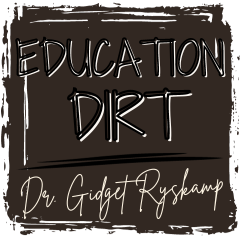Quiddler Education Examples
On this page, I present a variety of Quiddler education examples that can be used to teach specific spelling and reading concepts. In each example, applicable standards are provided. The selection of standards you will use depends on the specific activities you choose. To see a full list of ELA standards related to the use of Quiddler in education, check out the blog post Quiddler: A Playful Path to Spelling Success.
While the Common Core State Standards Initiative (CCSSI) provides a more overarching framework, individual states retain the authority to determine the specific methods of implementing these standards. States have the option to adapt the standards to their own instructional scope and sequence. In my home state of Florida, this adaptation is found in CPALMS. Each state’s standards is accessible through the state’s department of education website or by conducting an online search. For the education examples provided, I supply the universal Common Core State Standards for ELA.
Keep an eye on this space, as additional rules will be introduced to further enrich the learning experience as creative ideas continue to develop.
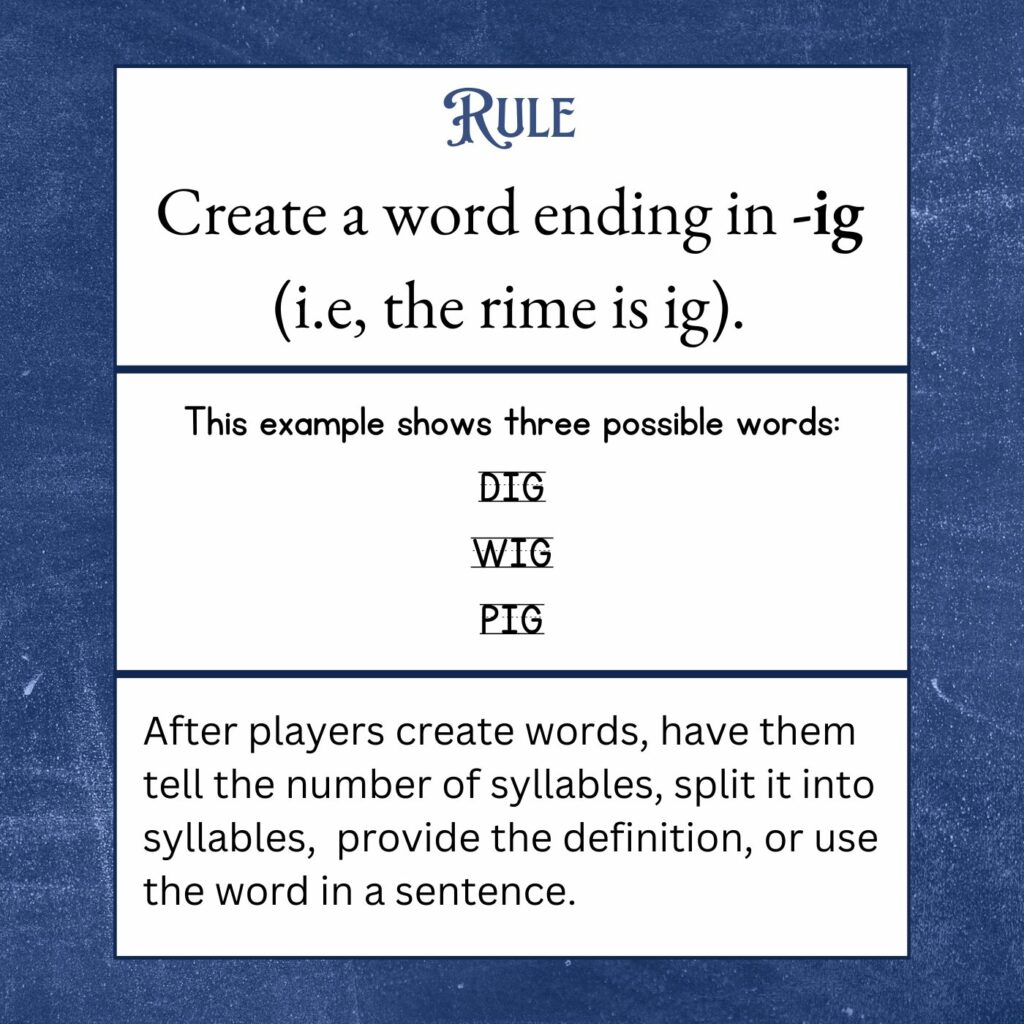
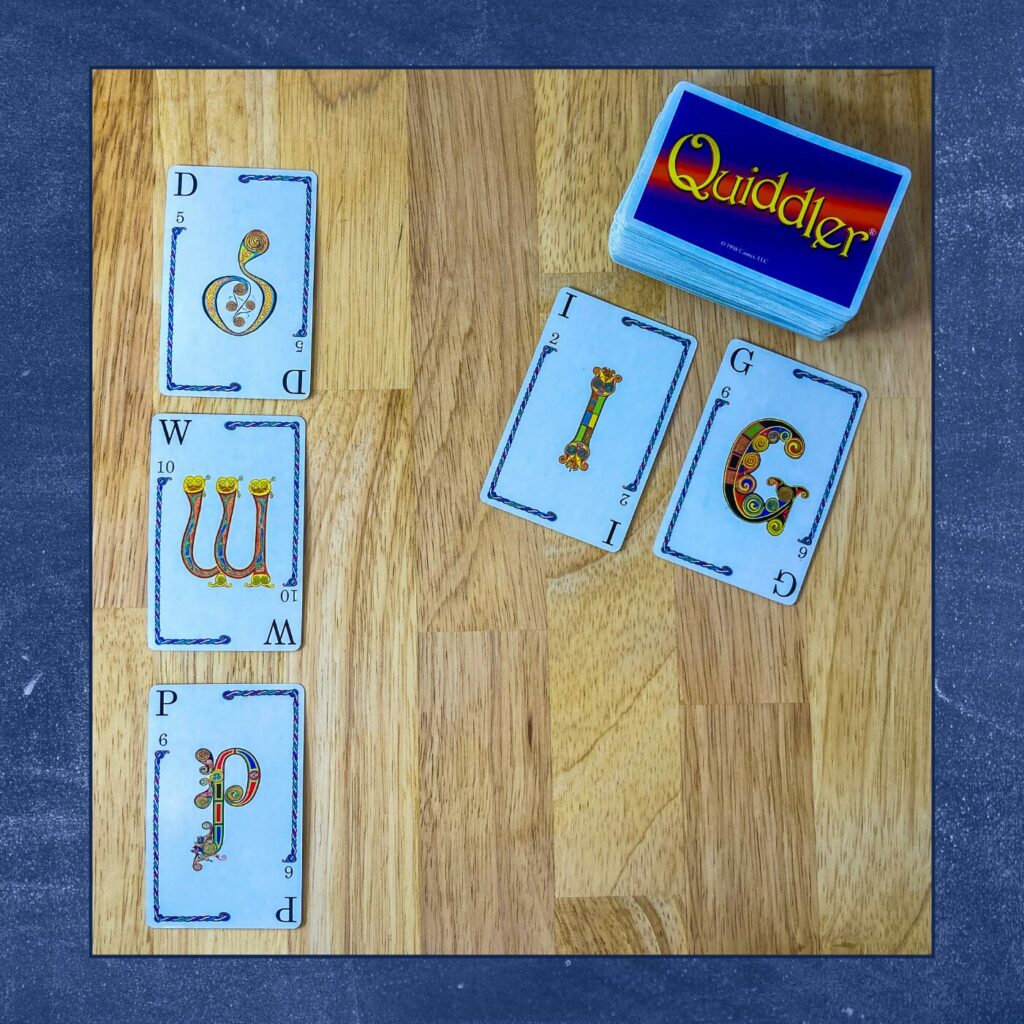
Provide the Rime
Young learners benefit from acquiring the skill of breaking words into smaller parts through the learning of onset-rime. For further insights into this skill, explore Thrive’s informative post.
In the initial stages of learning onset-rime, permit players to form straightforward one-syllable words following a specified rule. Like in the example, you can choose to supply the rime and have participants select a single letter to construct a word. This also helps players isolate the final sound in words.
As students generate words, record them on a board. Then, use the compiled list as a teaching tool for instructing consonant and vowel sounds, rime patterns, word families, or rhyming concepts.
Applicable Standards
Kindergarten
RF.K.3a: Demonstrate basic knowledge of one-to-one letter-sound correspondences by producing the primary sound or many of the most frequent sounds for each consonant.
RF.K.3b: Associate the long and short sounds with common spellings (graphemes) for the five major vowels.
RF.K.3d: Distinguish between similarly spelled words by identifying the sounds of the letters that differ.
Grade 1
RF.1.3b: Decode regularly spelled one-syllable words.
RF.1.3d: Use knowledge that every syllable must have a vowel sound to determine the number of syllables in a printed word.
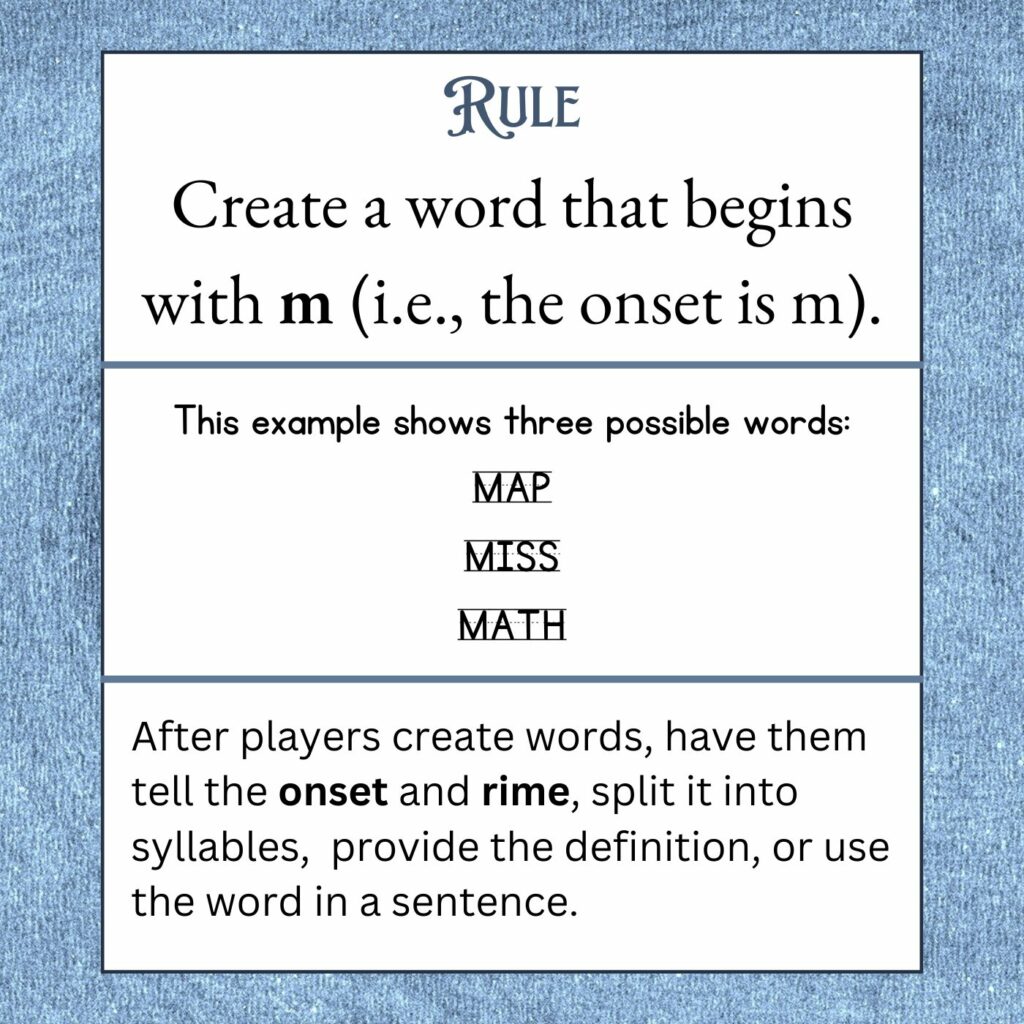
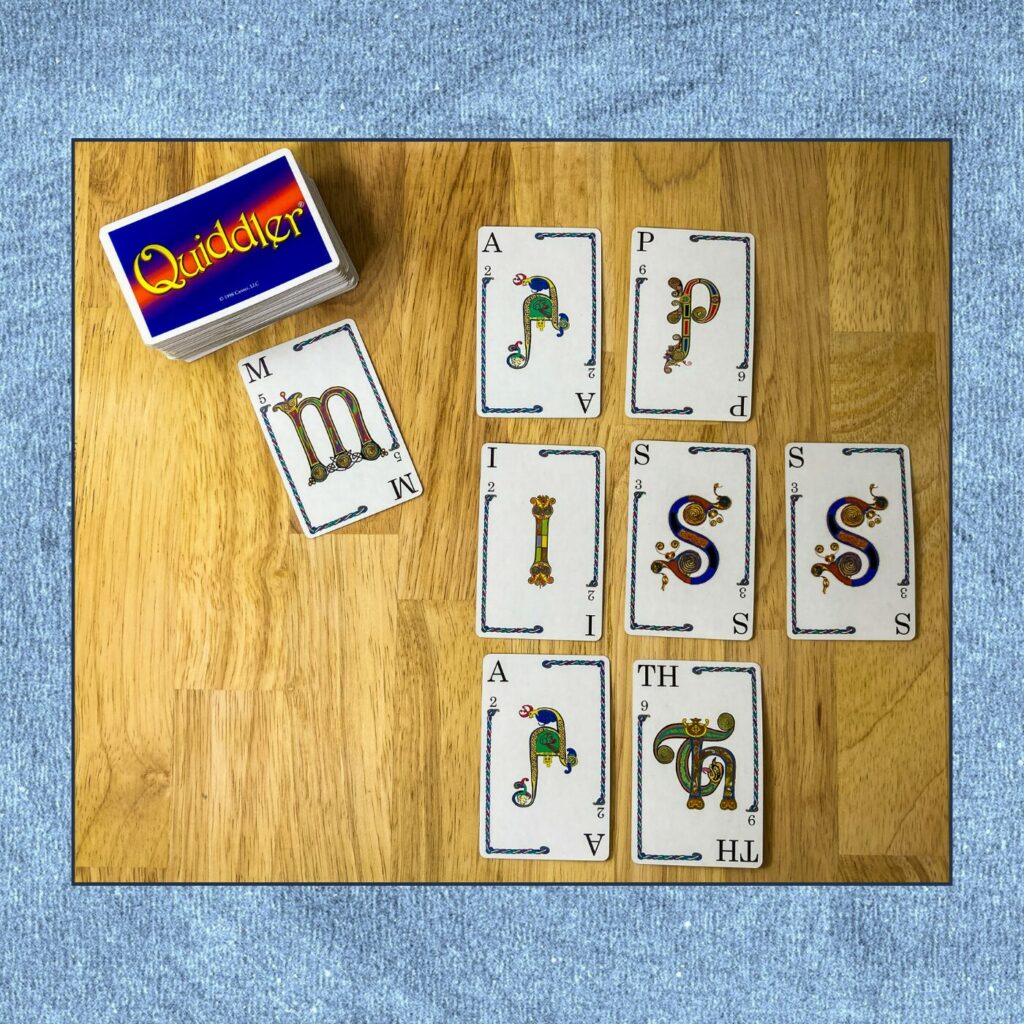
Provide the Onset
Young learners benefit from acquiring the skill of breaking words into smaller parts through the learning of onset-rime. For further insights into this skill, explore Thrive’s informative post.
In the initial stages of learning onset-rime, permit players to form straightforward one-syllable words following a specified rule. Like in the provided Quiddler example, you can choose to supply the onset and have participants select a single letter to construct a word. This also helps players isolate the initial sound in words.
As players generate words, record them on a board. Then, use the compiled list as a teaching tool for instructing consonant and vowel sounds. Depending on the words created, you could have players distinguish between short and long vowels sounds.
Applicable Standards
Kindergarten
RF.K.3a: Demonstrate basic knowledge of one-to-one letter-sound correspondences by producing the primary sound or many of the most frequent sounds for each consonant.
RF.K.3b: Associate the long and short sounds with common spellings (graphemes) for the five major vowels.
RF.K.3d: Distinguish between similarly spelled words by identifying the sounds of the letters that differ.
Grade 1
RF.1.3b: Decode regularly spelled one-syllable words.
RF.1.3d: Use knowledge that every syllable must have a vowel sound to determine the number of syllables in a printed word.
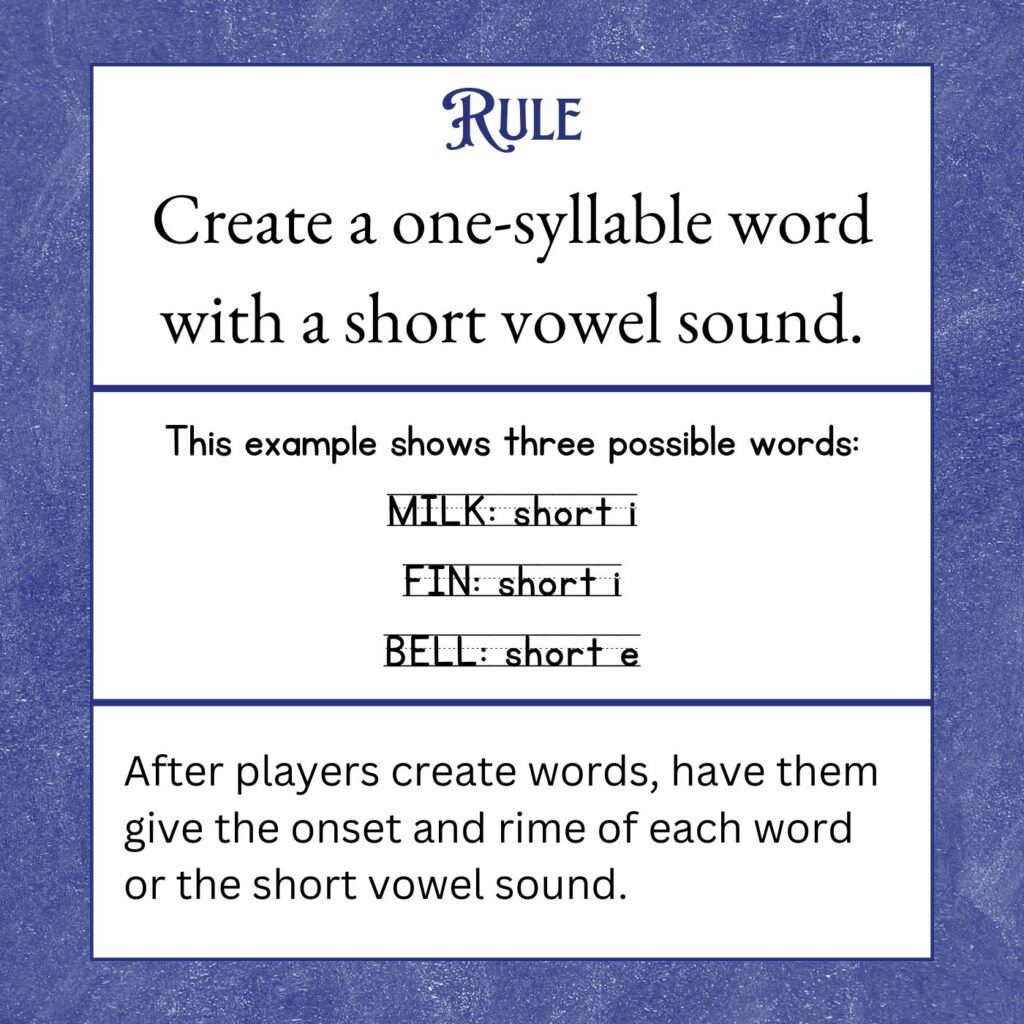
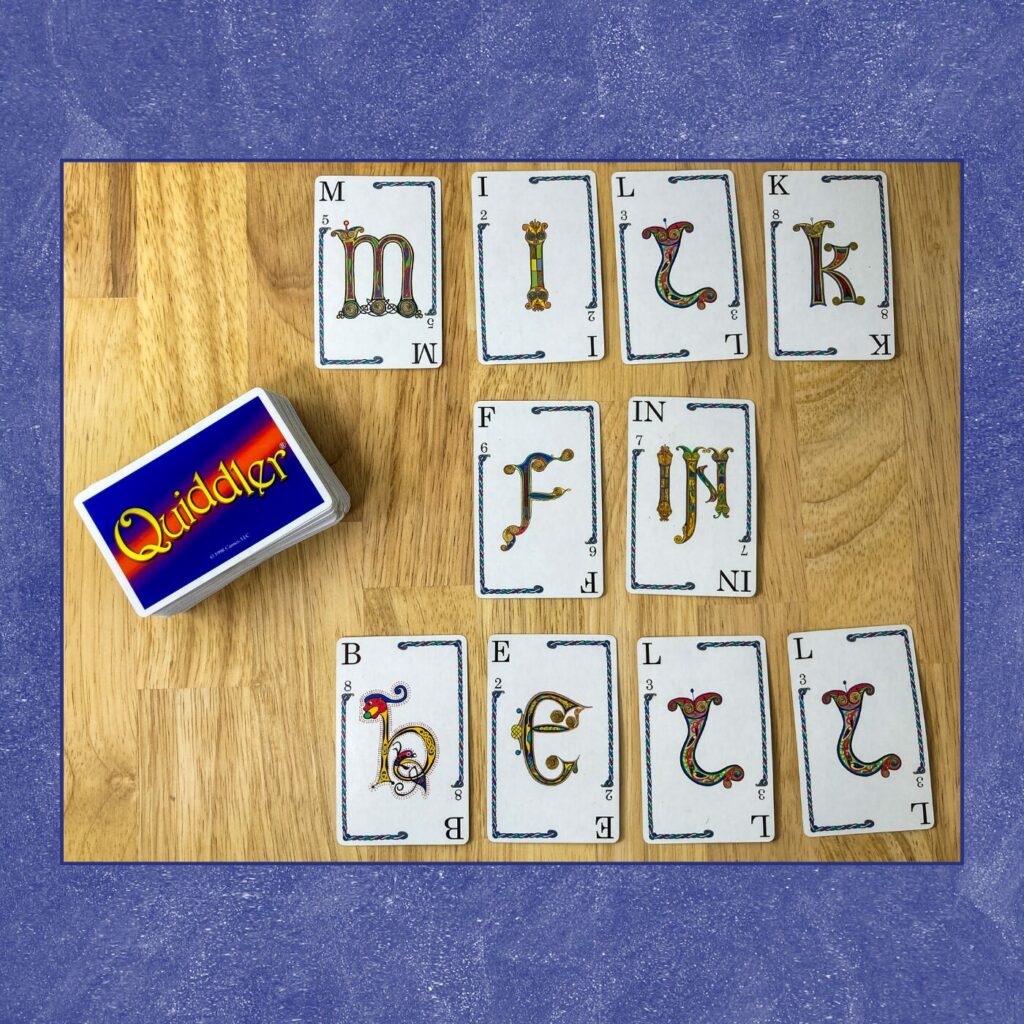
Short Vowel Sound
When focusing on short vowel sounds, you have the option to either specify the vowel sound you want players to use or allow them the freedom to choose their preferred short vowel sound.
Under this guideline, you might limit less advanced players to simple CVC words. As players progress in their reading skills, utilize the created words to introduce concepts such as open and closed syllables, vowel teams, or muffled vowel sounds.
For a guide to short vowel sounds, check out All About Learning Press.
Applicable Standards
Kindergarten
RF.K.3b: Associate the long and short sounds with common spellings (graphemes) for the five major vowels.

Common Word Parts
As learners gain skill and confidence, the words they create should become more advanced. The provided Quiddler examples show mid-level and advanced words.
Mid-level players could provide the pronunciation and syllables of the words along with a definition.
Advanced players could use a dictionary to discover new words. Then, they can provide the pronunciation and definition from the dictionary.
Applicable Standards
Kindergarten
